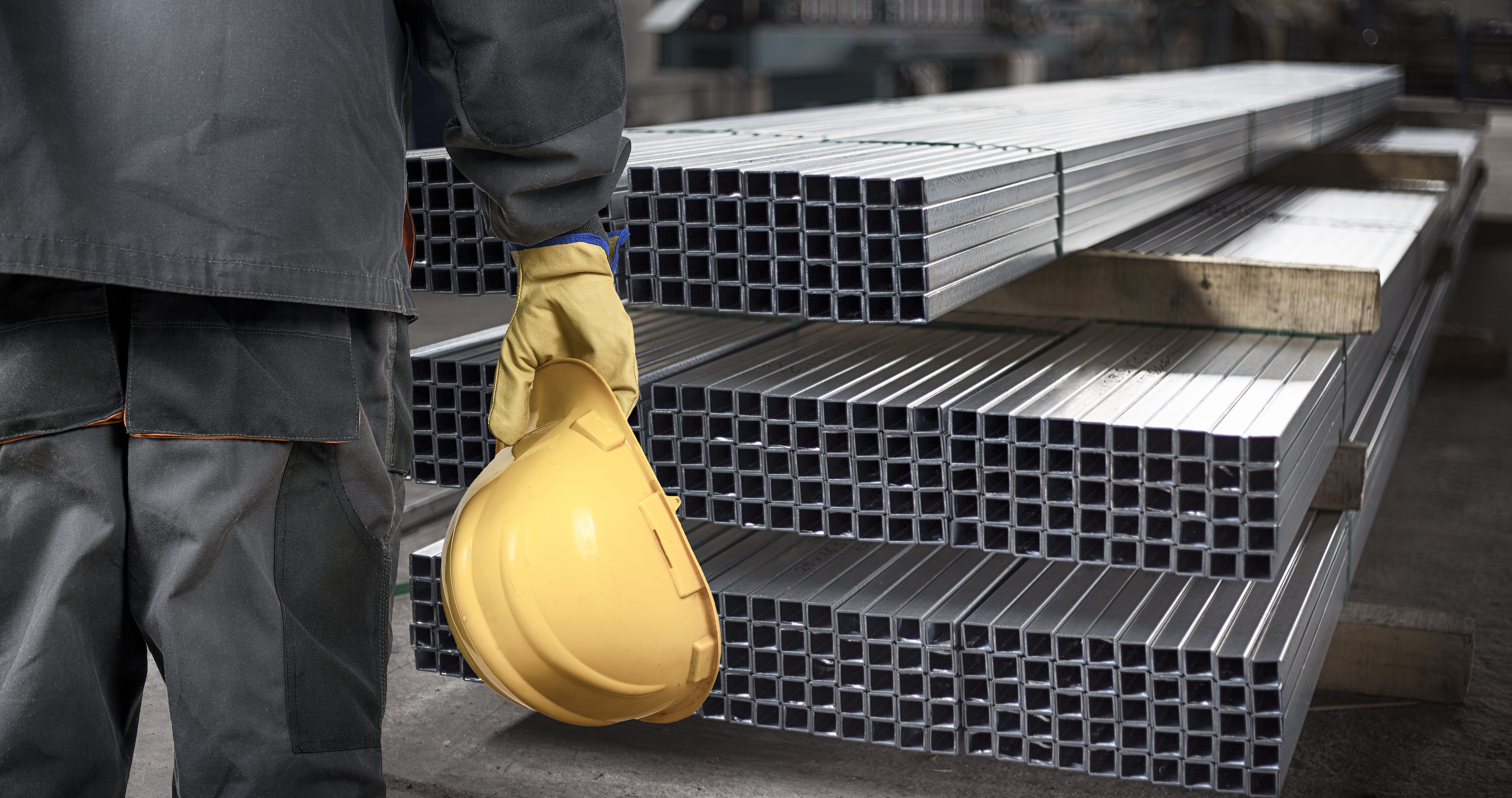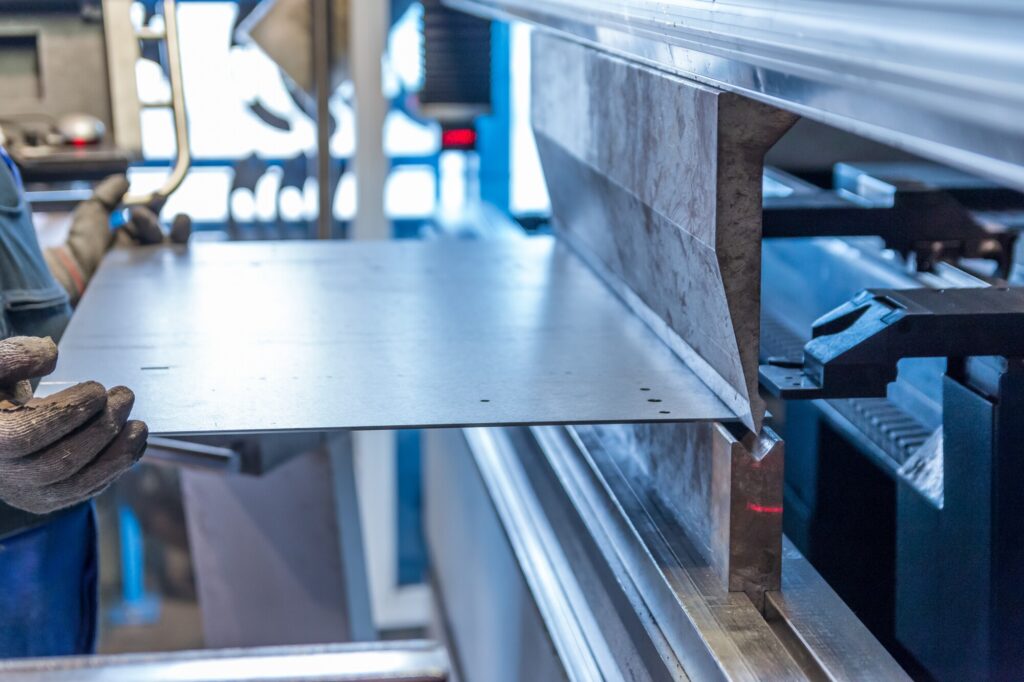Comprehensive Analysis of Cutting-Edge Techniques in Steel Manufacture Sector
As the steel construction market continues to develop, the assimilation of advanced methods has actually come to be vital for staying affordable and fulfilling the needs of contemporary manufacturing standards. From laser cutting innovations to the use of robotics and 3D printing in steel manufacturing, the landscape of construction strategies is rapidly transforming. With each advancement bringing its own set of advantages and difficulties, a detailed evaluation of these methods is critical for business intending to enhance their procedures, enhance precision, and eventually, raise the top quality of their steel construction result. In this dynamic industry where innovation plays a pivotal function, understanding the nuances of these advanced strategies is not just an option yet a need for those wanting to create in advance in the ever-evolving globe of steel manufacture.
Laser Reducing Innovations
In the world of steel manufacture, laser reducing improvements have actually reinvented the accuracy and effectiveness of metal shaping processes. By using the power of focused laser beam of lights, makers can now accomplish unequaled degrees of accuracy when cutting via numerous kinds of metals. This innovation enables intricate layouts to be implemented with very little material wastage, making it an economical service for industries calling for high accuracy elements.
One of the vital benefits of laser cutting is its ability to handle a vast array of materials, consisting of stainless-steel, aluminum, and carbon steel, easily. The procedure produces tidy, burr-free edges, eliminating the demand for extra finishing actions. Additionally, the non-contact nature of laser reducing minimizes the risk of product contamination, leading to better final result.
Furthermore, laser reducing devices can be set to make swift, accurate cuts, significantly minimizing production time compared to traditional cutting approaches. This speed and precision make laser cutting especially ideal for automation settings where efficiency is vital. As technology remains to breakthrough, laser cutting is poised to play a progressively vital function in the steel manufacture industry.

CNC Machining Innovations
The evolution of CNC machining innovations has actually ushered in a new age of precision and effectiveness in the steel fabrication market. Computer Numerical Control (CNC) devices have actually reinvented steel fabrication by supplying unmatched precision and repeatability in the production process. steel fixing. Among the crucial technologies in CNC machining is the assimilation of innovative software systems that enable real-time monitoring and modifications, resulting in enhanced efficiency and top quality control
In addition, the development of multi-axis CNC makers has actually allowed for the fabrication of complex steel parts with complex designs that were formerly challenging to produce. These makers can execute a variety of machining operations, including milling, drilling, turning, and grinding, all with high levels of precision.
Furthermore, the unification of automation and robotics in CNC machining has structured production processes, minimized lead times, and reduced the margin of error. This combination of cutting-edge technologies not just improves efficiency yet also ensures constant top quality across all made steel components. In conclusion, CNC machining innovations remain to drive improvements in the steel fabrication sector, setting new requirements for precision and performance.
Automated Welding Technologies
Automated welding innovations have reinvented the steel fabrication sector, improving performance and precision in the welding procedure. These innovative technologies use computer-controlled systems to automate the welding process, causing higher efficiency degrees and enhanced weld top quality. One of the crucial benefits of automated welding is the capability to perform complicated welds with regular accuracy, lowering the possibility of mistakes and rework.
Robotic welding systems go to the forefront of automated welding innovations, supplying exceptional rate and precision. These systems can deal with a vast array of welding tasks, from straightforward to intricate, easily (steel fabrication melbourne). By making use of advanced sensors and software program, robot welders can adjust to variations in product and joint geometry, ensuring an uniform Visit Your URL and reputable weld
In addition, Discover More automated welding technologies improve work environment safety by lessening the exposure of human welders to hazardous fumes and intense heat. As the steel fabrication industry remains to progress, including automated welding modern technologies will certainly be important for business wanting to remain affordable and satisfy the expanding demands for top notch bonded items.
Robotics Assimilation in Manufacture
Making use of robot systems in manufacture procedures has actually ended up being an essential method for improving effectiveness and precision in modern manufacturing environments. Robotics assimilation in steel manufacture supplies a myriad of advantages, consisting of enhanced productivity, improved quality assurance, and boosted precaution. These sophisticated robotic systems are equipped with sophisticated sensing units and programs abilities, allowing them to perform detailed jobs with a high level of precision and repeatability.
One of the key benefits of robotics combination in steel fabrication is the ability to automate recurring tasks, such as product handling, reducing, welding, and assembly procedures. This not only speeds up manufacturing cycles but also minimizes the danger of human mistake, causing higher total product quality. Furthermore, robots can run 24/7, considerably boosting manufacturing output and conference tight job deadlines.

3D Printing in Steel Production
Having actually transformed the steel construction sector via robotics integration, the growing expedition of 3D printing in steel production is positioned to further advancement the world of modern-day production strategies. 3D printing, also called additive manufacturing, uses extraordinary layout liberty and intricacy, enabling the creation of elaborate steel structures that were previously unattainable with standard production approaches. By utilizing computer-aided layout (CAD) software, manufacturers can precisely control the layer-by-layer deposition of steel material, resulting in get rid of enhanced geometries and functionalities.
One of the crucial advantages of 3D printing in steel production is its capability to decrease material waste substantially. Unlike subtractive production processes where excess product is cut away, 3D printing just utilizes the needed amount of steel required for the final component. This performance not just causes cost savings yet additionally straightens with sustainable manufacturing methods by lessening environmental impact.
Furthermore, 3D printing enables quick prototyping and personalization, enabling the production of tiny sets of complicated steel elements with short preparations. As the innovation continues to grow and come to be much more available, its assimilation right into mainstream steel fabrication procedures is expected to drive innovation and performance across the industry.
Final Thought
To conclude, the steel manufacture sector has actually seen considerable developments in methods such as laser cutting, CNC machining, automated welding, robotics combination, and 3D printing. These sophisticated modern technologies have actually revolutionized the way steel products are manufactured, leading to enhanced effectiveness, precision, and cost-effectiveness. Continued investment in these innovative techniques is essential for the industry to remain affordable and fulfill the demands of contemporary manufacturing procedures.
As the steel manufacture sector continues to develop, the integration of cutting-edge strategies has actually ended up being important for staying affordable and satisfying the demands of modern production requirements.One of the essential advantages of laser cutting is its capability to deal with a wide array of materials, including stainless steel, light weight aluminum, and carbon steel, with simplicity.Automated welding modern technologies have actually transformed the steel fabrication sector, improving efficiency and accuracy in the welding process.Having changed the steel construction industry via robotics combination, the burgeoning expedition of 3D Recommended Reading printing in steel manufacturing is positioned to further breakthrough the realm of modern production techniques.In final thought, the steel fabrication market has seen considerable advancements in strategies such as laser cutting, CNC machining, automated welding, robotics integration, and 3D printing.
Comments on “Reputable Steel Fixing Solutions: Making Sure Structural Integrity”